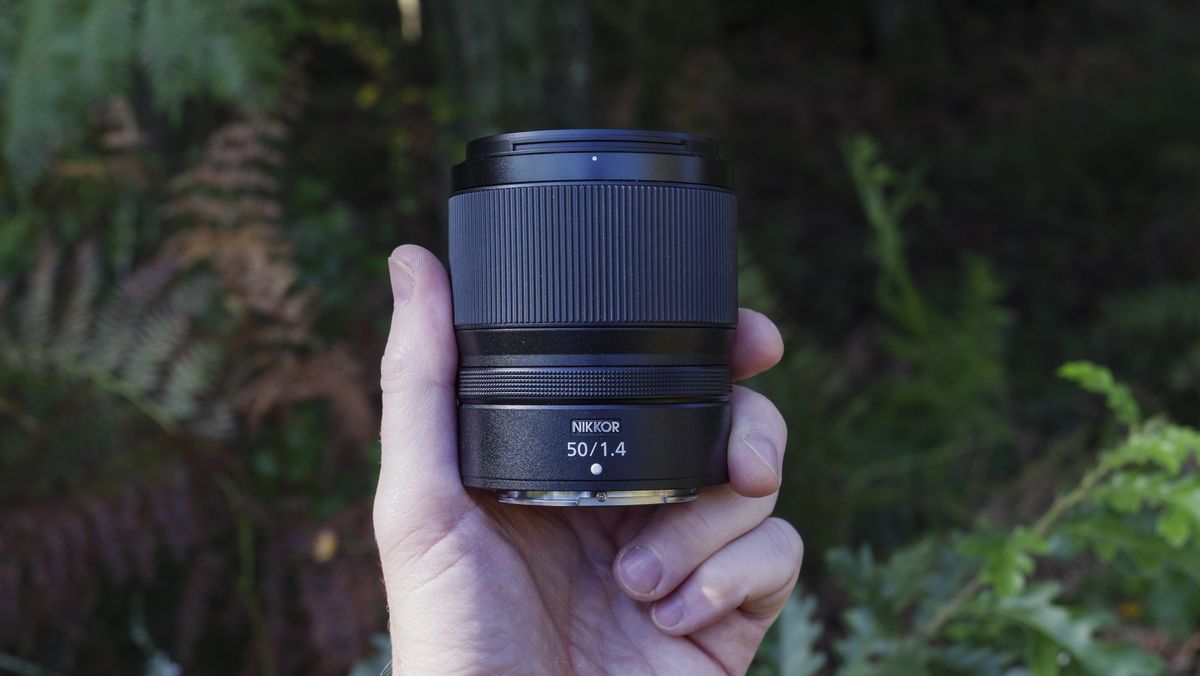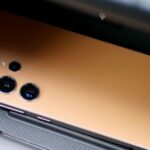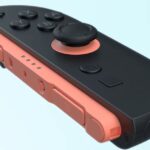Nikon Z 50mm f/1.4: two-minute review
The nifty-fifty lens is a staple in many a photographer’s camera bag – a typically compact lens for portraiture that offers good control over depth of field to make your subjects stand out. It’s the lens that I would recommend to beginner photographers having grown out of their kit lens and looking for a second lens to elevate the quality of their photos – and if they have a Nikon camera I would recommend the new Nikkor Z 50mm f/1.4.
Where mirrorless lenses can often be much pricier than DSLR equivalents – the classic 50mm f/1.8 lens for Canon and Nikon DSLR cameras is just about the cheapest lens you can buy at around $100 / £100 secondhand – Nikon is looking to buck this trend by creating affordable options for mirrorless, and the new Z 50mm f/1.4 is its cheapest Z-mount f/1.4 lens so far.
This isn’t Nikon’s first 50mm lens for its mirrorless cameras. It follows the optically-excellent Z 50mm f/1.8, which was one of Nikon’s first lenses for its Z-mount, launched back in 2018, while there’s also the 50mm f/1.2 pro lens with ‘S’ moniker, and the beastly 58mm f/0.95 Noctilux which costs a cool $9,000. However, the new Z 50mm f/1.4 is a stripped-back variation, with minimal external controls, a lightweight build, and offering decent rather than spectacular image quality.
It’s pretty much in the same mold as the Nikkor Z 35mm f/1.4 lens which I reviewed recently – the pair share practically the same size, weight, 62m filter size and design. One on hand I respect what Nikon is doing; where Canon launches the pro-grade RF 35mm f/1.4 for mirrorless which costs around $1,500 / £1,820 / AU$2,699, Nikon is launching a lens for enthusiast photographers for around a third of the price.
The downside, however, is that optical quality, while very sharp, is decent rather than outstanding, especially when it comes to bokeh. You’re not getting buttery-smooth out-of-focus light balls, but a slightly ‘fussy’ bokeh instead. I pitted it against the F-mount Nikon 50mm f/1.4G AF-S lens for DSLRs launched in 2008 (you can see the two lenses side by side, below) and the older lens has smoother bokeh.
However, bokeh is more circular in shape with the new Z-mount 50mm f/1.4, while its clarity wipes the floor with the F-mount 50mm f/1.4 G when shooting at f/1.4, which is what I suspect many photographers will be doing. In-focus detail is so much sharper at f/1.4, and even skin tones are more accurate – there can be a slight yellow-ish hue with the DSLR version of the lens.
That superior performance when shooting with the aperture wide-open is what you can expect with the best Nikon mirrorless cameras and lenses, while autofocus is snappier and more reliable too.
My F-mount 50mm f/1.4G AF-S, which by the way is almost the same price as the Z 50mm f/1.4, has notoriously bad back-focusing issues when used with a DSLR – you think the focus is on the eyes of your subject, only for it to be on the ears. When you’re shooting at f/1.4 with such shallow depth of field, it’s noticeable. This issue is somewhat improved when the lens is used on a mirrorless camera via an adapter, but the mirrorless lens still has the edge.
With mirrorless cameras, such as the Nikon Z6 III for which the Z 50mm f/1.4 is a perfect fit, you get the latest subject-detection and eye-detection autofocus, which will nail sharp focus on the eyes. And it’s this performance which makes a Nikon mirrorless camera with this new 50mm lens an easy recommendation, even if the icing on the cake would be slightly better bokeh.
Like the 35mm f/1.4, I expect the 50mm f/1.4 to prove popular, even if it’s not one of Nikon’s best lenses. If you’re upgrading from existing DSLR gear, of the two, I would buy the 50mm lens before the 35mm.
Nikon Z 50mm f/1.4 specs
| Type: | Prime |
| Sensor: | Full-frame |
| Focal length: | 50mm |
| Max aperture: | f/1.4 |
| Minimum focus: | 1.22ft / 0.37m |
| Filter size: | 62mm |
| Dimensions: | 3 x 3.5 inches / 74.5 x 86.5mm |
| Weight: | 14.9oz / 420g |
Nikon Z 50mm f/1.4: Design
- Small and simple
- Decent pairing with Nikon’s smallest mirrorless cameras like the Z6 III
- Quick and quiet autofocus
- Maximum 0.17x magnification ratio for moderate close-up photography
The Z 50mm f/1.4 design is pretty much a copy-and-paste of the Z 35mm f/1.4, meaning it’s a small and simple lens. The lenses are practically the same in size and weight, with the Z 50mm a hair’s breadth longer at 88.5mm in length, and tipping the scales at 14.9oz / 420g – that’s just 5g more than the 35mm lens.
Nikon’s equivalent F-mount lens for DSLRs – the 50mm f/1.4G – is smaller and lighter still, but so far as Nikon Z-mount lenses go, this is one of the smaller ones.
I tested the lens with a Nikon Z6 III and the Nikon Z6 II, mid-sized cameras for which the Z 50mm f/1.4 is perfectly balanced, being compact in form. Unlike those cameras, however, the Z 50mm f/1.4 isn’t officially weather-sealed, and so it’s probably best to treat it with care. Sure, the occasional light shower is no problem, but sand, dust, and heavy downpours could eventually prove the lens’ undoing.
There’s not a single button or switch on the lens, and as someone who regularly switches between manual and autofocus, I’ve missed having a direct control on the lens. I’d love to know Nikon’s reasoning for omitting a MF / AF switch – surely it can’t be a cost-saving exercise.
The only exterior controls are a generously-sized focus ring, plus a customizable control ring. The latter can be set to various functions, one of which is as a click-less aperture ring, which is a particularly handy control for filmmaking.
The minimum focus distance is 1.22ft / 0.37m, which results in a magnification ratio of 0.18x, which again is very similar to the Z 35mm lens. In real terms, you can easily fill the frame with close-up subjects like flowers, but this is no macro lens.
Autofocus is impressively quick and quiet. Pair this lens with the Z6 III, which boasts eye-detection autofocus and Nikon’s best subject-detection autofocus performance, and you have a powerful tool for portraiture. Put simply, you can rely on this lens, mounted on one of Nikon’s latest mirrorless cameras, to hit sharp focus where it matters most.
Autofocus is a refreshing and reliable experience when compared to shooting with my Nikon D800 and 50mm f/1.4 G AF-S lens, which I can’t trust and; to be blunt, using it can be a little stressful, especially in pressure moments such as a portrait shoot or a wedding. I’m so glad that I upgraded from DSLR to mirrorless years ago, and it’s lenses like the new Z 50mm f/1.4 that make the experience so enjoyable.
Nikon Z 50mm f/1.4: Performance
- Very sharp detail
- Handy wide aperture for shallow depth of field and low-light scenes
- Bokeh quality is just ‘good’
Autofocus is quick and reliable with one of Nikon’s latest mirrorless cameras, like the Z6 III, which is an excellent foundation for portraiture photography. Knowing that you’re getting sharp focus on the eyes is one less thing to worry about, helping you relax into portrait shoots. But what is optical quality like beyond accurate focusing? Overall, it’s just decent rather than spectacular.
Detail is very sharp. If you’re shooting with the aperture set anywhere between f/2 and f/8 you can expect tack-sharp detail across the entire frame for subjects within the field of focus. Even at f/1.4 detail is very sharp, and this lens wipes the floor with the F-mount DSLR equivalent, the 50mm f//1.4G, which is much softer at f/1.4.
The optical construction, as with most 50mm lenses, is relatively basic. There are nine aperture blades for a rounded aperture, and bokeh is nice and round at f/1.4, especially when compared to the bokeh produced by the F-mount 50mm f/1.4G, which is more cat’s-eye in shape in the corners of the frame. However, if you stop down the Z-mount lens to f/2.8 you’ll see the more octagonal-like shaping.
It’s the bokeh quality that could be a deal-breaker for professional portrait photographers, for whom the Z 50mm f/1.2 is the better choice, provided you can afford it (it’s almost five times the costs of the f/1.4 lens). For everyone else, bokeh quality is fine.
If you look closely at images with the f/1.4 lens, the edging of bokeh ‘balls’ is a little pronounced, rather than them having a nice smooth fall-off. Thankfully there’s little sign of aberrations in those edges, which would otherwise be impossible to fix at the click of a button. Only in the most extreme scenarios, like backlit water droplets (see above), will you see pronounced aberrations.
Vignetting – which is the light fall-off in the corners of images – is pretty standard. At f/1.4 it’s clear to see, while those darker corners significantly brighten at f/2, and the effect is all but gone by f/4. Below you can see the same image shot at f/1.4, f/2, f/2.8, f/4 and f/5.6, so you can compare bokeh, aberrations, and vignetting.
Nikon Z 35mm f/1.4: sample images
Should you buy the Nikon Z 50mm f/1.4?
Buy it if…
Don’t buy it if…
How I tested the Nikon Z 50mm f/1.4
- Regular use over one month
- Paired with the Nikon Z6 III and Nikon Z6 II
- Like-for-like tests with the F-mount Nikon 50mm f/1.4 for DSLRs
Nikon loaned me the Z 50mm f/1.4 for a whole month, and it was my primary lens during this period. I’ve taken it on early morning photo walks, made portraits, and used it in a wide range of stills and video scenarios. It has tackled some tough tasks, such as shooting close-up photos of water droplets into the light.
All in-camera lens corrections were turned off, and I took all photos in raw and JPEG format to compare the results un-corrected and the processed results. As always, I took several series of an identical image, working down the aperture range (in this case f/1.4, f/1.8, f/2, f/2.8, f/4 and f/5.6) to see how sharpness and bokeh compares at the various settings.
I also dug out my old F-mount 50mm f/1.4 lens, which I’ve previously used with a Nikon D800 DSLR, and took like-for-like photos with it alongside the Z 50mm f/1.4 on the Nikon Z6 III (via an adaptor for the F-mount lens). The resolution of the full-frame cameras used for this test was 24MP. I avoided using the camera in heavy rain, but felt comfortable using it in cold and moderately wet weather.
- First reviewed October 2024
Read the full article here














